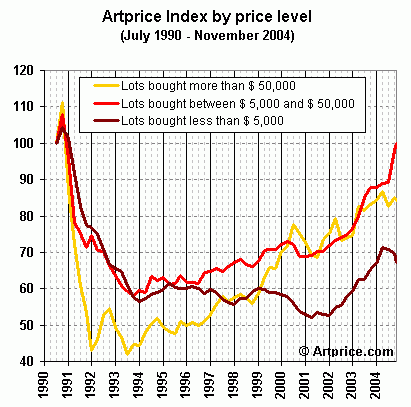Art market and speculative bubble
[15 Nov 2004]
Recent sales at Sotheby’s and Christie’s in New York, along with the sheer number of records being set, have led to fears of a speculative bubble on the art market.
Are today’s prices at the same level as in November 1990, when the bubble that had been buoying up the market throughout the late 1980s finally burst?
The acceleration of prices and high trading volumes during that period had tempted a growing number of investors onto the art market, and, stimulated by vigorous supply and demand, the inflationary spiral had ended up drawing all market segments in its train. The visible signs of this inflation were the growing volume of bids in the millions, as well as the lengthening list of new records, such as the USD 75 million paid for Vincent Van Gogh’s Portrait of Doctor Gachet.
At first blush, the headline sales in New York seem to suggest that conditions are the same this year. Since May 2004, Sotheby’s has been the holder of a new art-market record, with USD 93 million bid for Pablo Picasso’s Boy with a Pipe (1905). Then, between 1 January and 15 November 2004, no fewer than 328 bids over the million-dollar mark were recorded by Artprice, as against 210 last year.

According to Artprice, however, these unusual conditions only obtain at the high end of the market. The art information provider’s Global Index, which uses data on repeat sales, indicates that the prices of works of art purchased for more than USD 50,000 have risen 22.6% since January 2001, bringing them up to 16% of their level in November 1990. The USD 5,000-50,000 segment is just as speculative, with US prices growing 45% over four years and thus today reaching precisely the same level as 14 years ago. On the other hand, current rates for the under-USD 5,000 segment, which accounts for 77.2% of all transactions, are 33% below their level in 1990.
It must also be noted that the rally remains for the most part Stateside, where the market is being driven by the weakness of the greenback. And finally, apart from the prices being paid, volumes are still extremely limited, with Artprice recording almost a third fewer transactions compared with 2000.




 0
0
